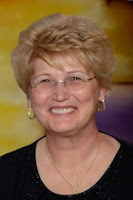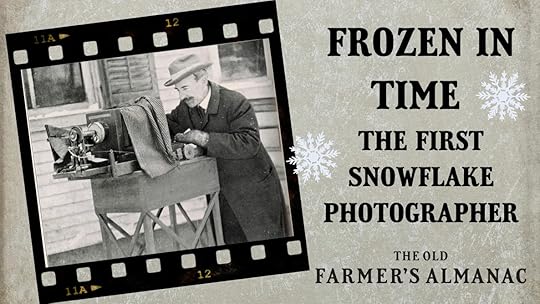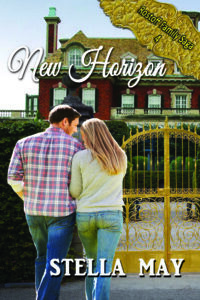C.D. Hersh's Blog, page 14
January 9, 2025
Friday Feature Soup Recipe
Okay, so it’s not the best takeoff on Marie Antoinette’s infamous saying, but that was my little way of announcing that January is National Soup Month. It’s true. You can check it out on Wikipedia. In honor of this auspicious event, my January posts will be dedicated to soup, well, at least the Wednesday posts. So tie on your aprons and let’s get cooking!
Cream of Mushroom Soup

1 lb. fresh mushrooms – use 2 or 3 different types
8 tbsp. butter
2 small shallots or scallions, finely chopped
6 tbsp. flour
1 qt. chicken stock *
¼ cup dry sherry
2 egg yolks
½ cup heavy cream
White pepper**
Clean mushrooms with a damp paper towel. Pull the stems and caps apart. Put pieces in a food processor. Run until chopped. The mix will almost look like a paste. Or fine dice the mushrooms by hand.
Melt 2 tablespoons of butter in a 10-12 inch skillet. Add mushrooms and shallots and sauté for 3 minutes. Set the skillet aside.
In a heavy 6-quart saucepan, melt the remaining butter over medium heat. Remove pan from the heat and stir in the flour. Cook over low heat, stirring constantly, for 2 minutes. Do NOT let this brown too much or it will be bitter. The roux should be no darker than a caramel/tan.
Remove the pan from the heat. Allow to cool 10-15 seconds, then pour in the stock while whisking constantly. Return the pan to a medium-high heat and stir until the soup base thickens and is smooth, approximately 12-15 minutes.
Stir in the mushrooms and sherry. Simmer for 15 minutes, but be sure to stir occasionally.
Blend the egg yolks into the cream with a whisk. Whisk in 3 tablespoons of hot soup at a time until you’ve added ¾ cup. Reverse the process and slowly whisk the now-warm mixture into the soup. ***
Bring soup to a boil over medium-high heat. Boil 30 seconds, stirring constantly. Remove the pan from the heat. Taste and season with pepper.
Serve from a tureen or in individual bowls.
This recipe makes 6 bowls
*You can substitute up to half the amount with dry white wine
**In this recipe white pepper is used for its slightly sharper taste. There is no need to make a special trip to buy white pepper. Black pepper will work fine, just use a little more.
***This may seem like extra work, but if you don’t do it the yolks and cream will curdle.
Happy slurping!
 Sloane Taylor is an Award-Winning romance author with a passion that consumes her day and night. She is an avid cook and posts new recipes on her blog every Wednesday. The recipes are user friendly, meaning easy.
Sloane Taylor is an Award-Winning romance author with a passion that consumes her day and night. She is an avid cook and posts new recipes on her blog every Wednesday. The recipes are user friendly, meaning easy.
To learn more about Taylor go to her website. Stay in touch on Blogger, Twitter, and LinkedIn.
Taylor’s cookbooks, Hot Men Wear Aprons, Date Night Dinners, Date Night Dinners Italian Style, Sizzling Summer, and Recipes to Create Holidays Extraordinaire are released by Toque & Dagger Publishing and available on Amazon.
January 7, 2025
Wednesday Special Spotlight Italian Struffoli

Baked Honey Balls, also known as Italian Struffoli, are a delightful traditional dessert that has been cherished for generations. These golden, bite-sized treats are made by baking small balls of dough and then drenching them in sweet honey syrup. Unlike other recipes, this is a baked Stuffoli (not fried), which dramatically cuts down on the time needed to be in the kitchen.
Often flavoured with hints of citrus or vanilla, Struffoli cookies are adorned with colourful sprinkles, transforming them into festive delicacies, especially during holidays like Christmas and Easter. With their crispy exterior and tender interior soaked in honey, each bite offers a heavenly taste of Italy’s culinary heritage, making them a beloved dessert worldwide.
For the recipe go to:January 6, 2025
Tell Again Tuesday Who discovered that no two snowflakes are alike?
The First Snowflake Photographer, Wilson BentleyBy Alice Cary

Is there any truth to the old saying, “No two snowflakes are alike”? Wilson A. Bentley, a farmer and amateur meteorologist, sought to answer that question, dedicating himself to observing flakes of snow for 50 years. See the first-ever photos of snowflakes!
Bentley was born in 1865 and raised on a farm near Jericho, Vermont, where his mother, a former teacher, homeschooled him and his brother when they weren’t doing farm chores.
On his 15th birthday, Bentley’s mother gave him the use of an old microscope. It was snowing that day, and the boy succeeded in getting a glimpse of a six-sided snowflake with the instrument; this was the beginning of a fascination that lasted the rest of his life. . . .
For the rest of the blog go to:January 2, 2025
Friday Feature Thoughts
At this time of year you are either thinking about what has happened over the past year or about what you want to accomplish in the New Year. Many make resolutions that barely last to the end of the month of January. With the cold storms sweeping across the northern part of America our thoughts turn to the coming of spring.

The first day of spring this year happens on March 20 at 5:01 A.M. EDT. This falls on a Thursday and is the astronomical beginning of the spring season in the Northern Hemisphere and the autumn season in the Southern Hemisphere. Does this seem early?
In fact over the next four years the vernal equinox occurs on March 20th and then in 2028 it occurs on March 19th, a Sunday. If you’ve always thought the first day of spring comes on March 21st you’ve not been following the calendar too closely. Due to time zone differences there hasn’t been a March 21st equinox in mainland United States during the entire 21st century! We won’t see a March 21st equinox again until 2101. Well, some of us might see it.
An interesting piece of folklore that goes along with the equinox is the ability to stand an egg on its end. This egg folklore became popular in 1945 following a LIFE article about the spring practice. “The origins of this myth are attributed to stories that the ancient Chinese would create displays of eggs standing on end during the first day of spring,” according to John Millis, assistant professor of physics and astronomy at Anderson University in South Carolina. “The ancient Chinese celebrated the first day of spring about six weeks earlier than the equinox”—not just on the equinox itself.
As with most folklore, it’s only partly true. You should be able to balance an egg on its end on the equinox, but it’s possible to balance an egg on other days, too!
Folklore or not, this egg trick sounds like fun to us. Try this yourself and let us know how you did it in the comments. (Tip: You’ll probably have better luck balancing an egg if you try it on a rough surface—or use an egg that has a bumpy end.)
December 30, 2024
Tell Again Tuesday Happy New Year
Wishing you a safe celebration
Enjoy the parties and evening festivities, but be safe so you are around for next year’s celebrations.
December 24, 2024
Wednesday Special Spotlight Christmas Card

Drawn by Catherine (the C of C.D. Hersh)
original copyrighted art
For permission to reuse, please contact C.D. Hersh
Catherine created this card in a time past when we painted Christmas scenes on windows for various stores in our area. We painted on the inside of the store windows so that the weather would not wash the pictures off prematurely. This also necessitated painting the picture backward.
She created this piece of window art at church to coordinate with a cantata the choir was performing then later turned the drawing into a Christmas card. Fortunately, this window was meant to be viewed from inside and she didn’t have to write the partial verse “For God so loved the world…” backwards on the glass like she did when we decorated store Christmas windows with the holiday greetings Merry Christmas and Happy Holidays. While she can write backwards, it’s not as neat as writing the normal way.
A bit of trivia here on our window and card art. We used tempera paint on most of the big windows because of the expense of acrylics for large areas. They are messy to clean up, but lots of fun to create. The card artwork however was done with colored pencils.
We hope you’re enjoying your Christmas day!
December 23, 2024
Tell Again Tuesday Merry Christmas
Today we wish you all a merry Christmas eve

December 19, 2024
Friday Feature Puddings
This is a re-share of an older post that seems appropriate at this time of year.
I (Catherine), the “C” of C.D. Hersh, have discovered avocado puddings. Never heard of them? Well, apparently they are full of good fats, loads of fiber, have a low glycemic index (which is important for those watching their carbs, and they can be made without dairy products, if you are vegan or lactose intolerant). They have the creaminess of instant puddings without the unnatural ingredients that comes in that box. The extra bonus of avocado puddings–they taste good. The kiddos will never know they are eating something good for them. So far I’ve experimented with chocolate, which was super chocolatey and not as sweet as it could have been since I skipped a lot of the sugar. I like to see how low-sugar I can possibly go.
I love pumpkin. Donald not so much. The other day I got a pumpkin craving so I decided to play with avocadoes and pumpkin. This newest culinary invention is a Ginger Pumpkin pudding. I liked it, so I decided to share the recipe. Now I won’t guarantee this recipe that makes 4 servings is low calorie, but there is quite a bit of fiber in it to help offset some of the carbs.

Avocado Ginger Pumpkin Pudding
1 ripe avocado¾ cup canned pumpkin
1 ½ – 2 cups vanilla flavored yogurt, divided.
½ tsp. lemon juice
1 tsp. pumpkin pie spice
8 small gingerbread cookies, crushed, with 4 tsp. reserved
Canned whipped cream or make your own
4 tbsp. shaved chocolate, from a candy bar
Cut avocado in half, discarding pit and skin. Put flesh in a food processer and blend until smooth.
Add pumpkin, and ½ of yogurt, lemon juice and spices to avocado and blend until well mixed.
Spoon remaining yogurt into small glass dessert cups, filling cups about ½ full. Spread evenly in cup.
Spoon pumpkin mixture over the yogurt, spreading evenly.
Cover dishes with plastic wrap, gently pressing the wrap onto the top of the pudding.
Chill.
When ready to serve, top the pudding with the crushed gingerbread cookies, sprinkling evenly on top of pudding.
Add a dollop of whipped cream to top of pudding. Sprinkle reserved cookies and shaved chocolate on whipped cream.
You can use this recipe for any holiday meal but I thought I’d re-share for the upcoming holidays.
December 17, 2024
Wednesday Special Spotlight NEW BOOK RELEASE
Women’s fiction and romance writer Stella May is excited to announce the new release of New Horizon, book 4 in her Rostoff Family Saga. Here is a brief introduction and excerpt for your reading pleasure.
A promise. A warning. A vow.
 Will healing find a way or condemn them to heartbreak?
Will healing find a way or condemn them to heartbreak?
Though hundreds, even thousands of miles lie between her and those she loves, Natasha is convinced one of them is in great danger. She knows it with a certainty that triggers brutal migraines and a premonition of disaster that sets her heart thundering.
Which one is it? Who is about to be torn from her life without the chance to say goodbye—or ask for forgiveness?
Maybe Katia, a talented artist, an independent woman, who still believes the lie that Natasha is dead.
Or Peter, an FBI agent in a dangerous job, who’s burdened with a secret that’s destroying his soul from the inside out.
Or Dmitry, the man she once promised never to leave—until she was forced to abandon him and his children.
With the reading of the evil and vindictive Elizabeth Rostoff’s will fast approaching, Natasha’s day of reckoning is at hand. And so is the sense of danger she just can’t shake. Sick with guilt and secrets, she must gather her courage and face reality. And banish the specter of Elizabeth Rostoff’s ghost for good. No matter what the cost.
EXCERPT
When she finally fell asleep, Natasha plunged into a nightmare. Trapped in its chilling tentacles, she struggled to wake up, but all her desperate attempts only drew her deeper into the murky horror. It seemed terrifyingly real. The smell of burnt flesh…the burst of shots…the terrible screams …the screeching sounds of mangled metal…
Panic surged upward, hot and overwhelming. Paralyzed with fear, numb from it, Natasha helplessly watched the scene unfolding before her eyes.
Mayhem. Blazing inferno scorched her skin, the gunshots made her ears ring, and the smell…My God, the smell! Horrifying. Blind from smoke, half- deaf from the gunfire, she started to run. Fast, then faster. Fighting to draw air into her lung, she pumped her legs as if her life depended on it. A sudden searing pain ripped into her shoulder, then her back. Again, and again, like someone poked her torso with a hot cattle prod. Excruciating agony ripped through her body. Her left leg gave out.
Unable to run, she stumbled, then fell.
I am dying.
With a scream trapped in her throat, she woke up. Gasping, covered in perspiration from head to toe, she jerked against the mattress, and wrestled with the sheets in an attempt to free her legs. The shadows of her nightmare still swirled in her brain. Echoes of screams and gunfire rang in her ears. Her heart thundered in her chest, beating like a sledgehammer against her ribcage.
Something’s wrong.
Fear coated her gut, chilled her to the marrow.
Someone’s hurt.
Her infamous six sense that laid dormant for a long time, resurfaced now with a vengeance. Natasha dreaded it, hated it, but learned to never doubt it. Once upon a time, it saved Katia’s life.
Who is in danger now?
Someone she loved. Someone she deeply cared about.
That means Dmitry and Katia, Rose and Larry. She talked to Rose yesterday, and her dear friend sounded happy and cheerful. Thank God.
All the others were located at the estate, if not quite happy but safe.
She and Katia spent long hours into the night talking and getting reacquaint after eighteen years of separation. There were tears, and laughter, and joy, and thankfully, no accusations or blame on Katia’s side. Elated, happy, Natasha all but lost track of time. But that emotional reunion took its toll. Finally, both depleted and exhausted, they decided to retire for the night. As Katia’s declared, they now have the whole time in the world to talk.
So, everybody accounted for, except Petya.
Delayed because of his job. A very dangerous job. She tensed.
The images from her horrible dream swam before her eyes.
Blood, fire, mangled metal and burning flesh. The sounds of gunfire like a deadly staccato still echoed in her ears. The phantom ache in her shoulder and back and left leg began pulse and burn. And she knew.
My God, Petya!
Natasha jumped from the bed, stumbled, and fell heavily down. The pain from her knees hitting the hardwood floor sang all the way to her thighs. She cursed, absently rubbed her abused flesh, then sprung up. What to do? Wake up Dmitry? And what will she tell him? That she dreamt of blood and gunfire? Phone Petya? What time is it? She turned, glanced at the wall clock. Barely six AM. Too early? After a second hesitation, she grabbed her iPhone charging on the nightstand, and quickly punched in his number. It went straight to voice mail. She disconnected, more agitated than before. Deep in her heart she knew Petya was in trouble. But what to do?
Dammit, I must do something!
She grabbed her robe from the foot of the bed, and shrugged into it, then bolted from the room. A sudden bloodcurdling wail froze her to the spot. Where did it come from? Another sound of a desperate cry chilled her blood.
Somewhere downstairs.
Before her brain registered it, she sprinted toward the staircase, as another keening turned her blood to ice. She flew along the hallway, then a flight down the stairwell, and abruptly collided against Dmitry. He grabbed her shoulders, managing to break her imminent fall. They both jolted at another sound of mournful wailing.
“Someone’s hurt!” She strained her ears, as another chilling moan pebbled her skin in goosebumps. “Where…?”
“The parlor!” He pushed her away, and barreled down the staircase. She hurried after him. At the first-floor landing, they both swerved their faces left and right.
“Oh, Christ almighty.”
Full of despair, Dmitry’s helpless oath ricocheted around the vast room. She followed his gaze. She blinked a couple of times before her eyes focused.
Katia lay sprawled on the floor near the doors, her body partially on top of the two bodies of the dogs. Tears ran in rivulets down her face, as she hugged the unresponsive shepherds. Then Katia lifted her face. Another blood-chilling moan burst free. Terrifying, her grief tore at Natasha’s soul. Unmindful of her own tears, she took a step toward the girl, but Dmitry beat her to it. Dropping on his knees in front of his daughter, he lifted her from the bodies of the dogs, and gently shook her by the shoulders. “Katie, baby, are you hurt?”
Sobbing, she sagged into his arms. “No, I’m not, but Buyan and Buran, my precious boys…” She let out a low tortured moan. “They’re dead, Daddy. Both of them. Oh, Lord!”
Thank God. Not Katia.
No matter how horrible the dogs’ fate, Natasha slumped with relief.
Katia, unharmed. Most important than anything.
Switching her gaze at the poor animals, Natasha shuddered. Lying on their sides, with their open eyes glazed with death, both huge dogs seemed to have shrunk in size. Such a horrible and sad picture. Poor Buyan and Buran. She squinted, then focused on their mouths. Thick white foam covered their muzzles, dripping down.
Poison.
The dogs were poisoned. Murdered. Intentional or an accident? Maybe, they swallowed something toxic? She shook her head. No, as trained guard dogs, they’d never root in the utility closet with all the stored cleaning supplies, much less accept food from a stranger.
So, someone from this household deliberately killed the dogs. But why? And who? Who could have done such a cruel, senseless thing?
Katia’s sudden loud scream knifed the silence. “It’s him! I know it! No one is brutal enough to do such a despicable act.”
Natasha swiveled her head at whoever Katia pointed at. It surprised her to find so many people crowding the parlor. Vera, the cook, Larry and Nick, Dmitry’s driver, and a couple of other people she failed to recognize. Towering over the group, dressed in his usual black attire, Ivan stood out like a messenger of doom.
Visibly shaking, Katia pointed her finger at him.
“You, miserable excuse for a human being, how could you! How could you take your revenge on them. They didn’t do anything to you, you bastard. They were just dogs. I’m going to kill you, I swear. I’m going to scratch your stinking eyes out of your morbid face!” And like a live missile, Katia launched to her feet and bolted toward Ivan. It took both Dmitry and Larry to intercept her, bodily dragging her away from the old butler. Like her namesake, the girl clawed, kicked, and screamed. And then, as abruptly as it started, her rage deflated. She covered her face with both hands and dissolved into heart-wrenching sobs.
Get your copy on Amazon and other popular vendors. Stella May is the penname for Marina Sardarova who has a fascinating history you should read on her website.
Stella May is the penname for Marina Sardarova who has a fascinating history you should read on her website.
Stella writes women’s fiction along with fantasy romance as well as time travel romance. She is the author of ‘Till Time Do Us Part, Book 1 in her Upon a Time series, and the stand-alone book Rhapsody in Dreams. Love and family are two cornerstones of her stories and life. Stella’s books are available in e-book and paperback through all major vendors.
When not writing, Stella enjoys classical music, reading, and long walks along the ocean with her husband. She lives in Jacksonville, Florida with her husband Leo of 30 years and their son George. They are her two best friends and are all partners in their family business.
Follow Stella on her website and blog. Stay connected on Facebook, Twitter, and Pinterest.
December 16, 2024
Tell Again Tuesday Next?
After The EndBy Kathleen McCleary

Six weeks ago I finished the novel I’ve been writing for the last two years. I typed the words “THE END,” sat back in my chair, and promptly burst into tears—something I’ve never done before after writing. But completing this book felt like a significant end to me, the end of a work I’d loved writing, the end of a period of my life that had included some major upheaval (I came up with the idea during the pandemic, and started writing a year after my mother died). I felt a mix of relief, joy, pride, amazement (I really wasn’t sure I’d ever write another novel), and a huge sense of loss that it was over.
Writing a novel is to immerse yourself in a world that’s . . .
For the rest of the blog go to:


